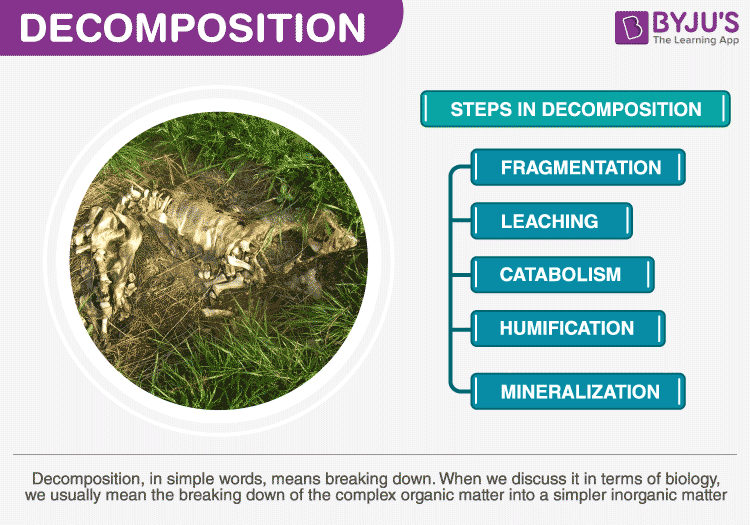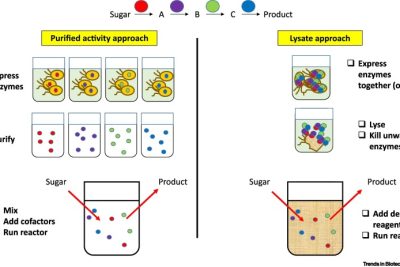
What are the steps in the biological decomposition process

The process of biological decomposition is a vital component of our ecosystem that facilitates the recycling of organic materials. Understanding the steps involved in this biological breakdown helps illuminate how nutrients are returned to the soil, supporting plant life and other organisms. This article delves into the intricacies of the decomposition process, exploring the various stages that contribute to this natural phenomenon.
As matter decomposes, it undergoes significant transformations driven primarily by microorganisms, fungi, and other decomposers that play a crucial role in the environment. Recognizing the importance of these processes not only enhances our appreciation of nature but also informs sustainable practices in agriculture and gardening. By grasping the principles of biological decomposition, we can make informed decisions that promote healthy ecosystems and productive landscapes.
- Understanding Biological Decomposition
- Types of Biological Decomposition
- Stage 1: Fragmentation of Organic Matter
- Stage 2: Leaching of Nutrients
- Stage 3: Mineralization Process
- Stage 4: Humification
- Factors Influencing Decomposition Rate
- Human Impact on Decomposition Processes
- Applications of Decomposition in Sustainable Practices
- Conclusion: The Cycle of Life and Decomposition
Understanding Biological Decomposition
Biological decomposition refers to the process by which organic substances are broken down into simpler organic or inorganic matter. This natural recycling process is essential for the maintenance of ecological balance, as it ensures that nutrients are continuously cycled and made available for various forms of life. Biological decomposition occurs in several stages, each characterized by distinct biological and chemical processes that contribute to the breakdown of organic material.
The Importance of Decomposition in Ecosystems
Decomposition plays a critical role in ecosystems by recycling nutrients, which are vital for plant growth and overall health of the soil. Without biological breakdown, organic waste would accumulate, leading to the potential depletion of nutrients within the ecosystem. As organisms die and decay, plants and other living beings benefit from the return of essential nutrients. This cycle fosters biodiversity and sustains life within various habitats.
Types of Biological Decomposition
There are multiple types of biological decomposition, including aerobic and anaerobic decomposition. Each type is defined by the presence or absence of oxygen and can lead to different end products. Aerobic decomposition occurs in the presence of oxygen and involves the breakdown of organic matter by microorganisms that utilize oxygen for energy, producing carbon dioxide, water, and biomass as byproducts. In contrast, anaerobic decomposition occurs in the absence of oxygen, leading to the production of methane and other gases as well as fewer nutrients being released.
Initial Breakdown: The Role of Microorganisms
Microorganisms such as bacteria and fungi are the primary agents of biological breakdown. They initiate the decomposition process by breaking down complex organic compounds into simpler forms. These organisms secrete enzymes that catalyze the breakdown of carbohydrates, proteins, and fats, transforming them into usable nutrients. Their activity is vital for the recycling of nutrients in the environment, making them indispensable in the decomposition process.
Stage 1: Fragmentation of Organic Matter
The first stage of biological decomposition is fragmentation, where larger organic matter such as leaves, animal remains, and plant debris are broken down into smaller pieces. This process is usually facilitated by larger decomposers like earthworms and arthropods, which physically break down material, increasing the surface area available for microbial action. The fragmentation makes the material more accessible for microorganisms, which enhances the efficiency of subsequent decomposition processes.
Stage 2: Leaching of Nutrients
Following fragmentation, leaching occurs, wherein water-soluble nutrients are dissolved and washed away from the organic matter into the surrounding soil. This stage is influenced by precipitation and soil moisture levels. Nutrients such as nitrogen, phosphorus, and potassium are splashed away, enriching the soil and making them available for plant uptake. Leaching plays a significant role in nutrient cycling, promoting plant health and sustaining crop yields.
Stage 3: Mineralization Process
The mineralization process follows leaching, where organic nutrients are converted into inorganic forms that can be readily absorbed by plants. During this stage, microorganisms continue to decompose organic matter, converting nitrogen-rich compounds into ammonium and nitrates, essential forms of nitrogen that plants can utilize. This transformation is crucial as it ensures that nutrient availability matches plant demand, fostering healthy growth.
Stage 4: Humification
The final stage of biological decomposition is humification, where organic matter is further broken down and transformed into humus. Humus is a dark, organic material that enhances soil fertility due to its high nutrient content and moisture-retaining capabilities. This stage is essential for soil structure and supports microbial life, thereby creating a rich environment for plant growth. The presence of humus in soil encourages biodiversity and stability, creating a flourishing ecosystem.
Factors Influencing Decomposition Rate
Several factors influence the rate of biological breakdown, including temperature, moisture, oxygen levels, and the type of organic material being decomposed. Warm temperatures and adequate moisture generally enhance microbial activity, accelerating decomposition rates. Conversely, cold, dry, or anaerobic environments can slow down the process significantly. Additionally, the composition of organic matter, such as its carbon-to-nitrogen ratio, affects how quickly it decomposes, with high-nitrogen materials breaking down faster than carbon-rich ones.
Human Impact on Decomposition Processes
Human activities can significantly impact biological decomposition processes. Urbanization and industrialization may introduce pollutants that inhibit microbial activity, while land-use changes can alter natural decomposition dynamics. Practices such as monoculture farming can deplete soil nutrients, ultimately affecting the health of ecosystems. Awareness of these impacts is essential for developing strategies that promote healthy decomposition practices and enhance soil fertility.
Applications of Decomposition in Sustainable Practices
Understanding biological decomposition processes leads to innovative applications in sustainable agricultural practices. Techniques such as composting harness the power of natural decomposition to create nutrient-rich soil amendments needed for plant growth. Implementing green waste recycling and promoting the use of biodegradable materials further supports the decomposition process, contributing to reduced waste and improved soil health. By adopting sustainable practices, we ensure the long-term viability of agricultural systems and bolster environmental resilience.
Conclusion: The Cycle of Life and Decomposition
In conclusion, the biological breakdown of organic matter is a vital process that sustains life on Earth. The extensive stages of decomposition, from fragmentation to humification, play an important role in nutrient recycling and maintaining ecosystem balance. By being mindful of human impacts and applying knowledge of decomposition processes, we can promote healthier environments and foster sustainable practices. Understanding and facilitating biological decomposition create opportunities for regenerative growth and thriving ecosystems in our gardens and beyond.
Did you find this article helpful? What are the steps in the biological decomposition process See more here Education.
Leave a Reply






Related posts